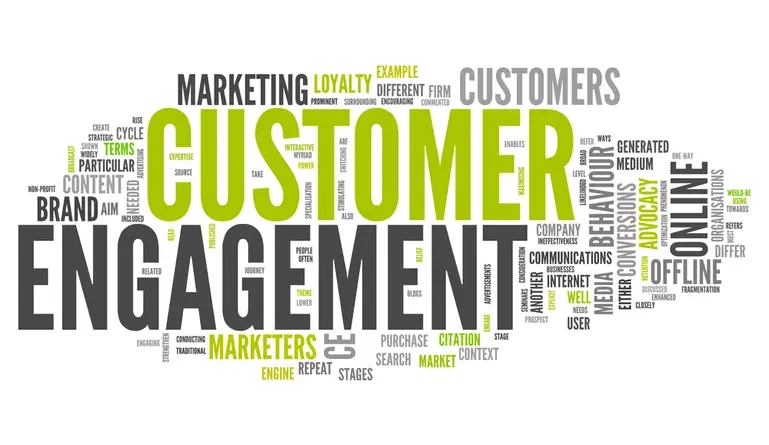
CEM, which stands for customer engagement management, is a phrase that is used to describe the methodical process that businesses use to optimise and manage customer interactions across a wide variety of channels and touchpoints among their customers.
It encompasses a wide range of activities with the purpose of enhancing interactions with customers, fostering relationships, and ultimately boosting satisfaction and long-term commitment.
CEM is a combination of technology, data analysis, and human engagement that aims to create individualised and seamless customer service experiences.
Customer engagement is any contact or engagement that takes place between a customer and a business or its representatives through a range of channels.
This type of interaction can take place in a variety of ways.
This encompasses all forms of communication with the company, including but not limited to phone calls, emails, social media, in-person meetings, and any other channel through which the customer interacts with the company.
Customer engagements can include a wide variety of activities, including but not limited to enquiries, purchases, requests for assistance, feedback submissions, and other types of involvement.
When a connection is made, the company can learn about the requirements of the customer, resolve issues, provide support, or develop experiences that are tailored to the customer’s preferences.
In the long term, each of these activities contributes to the formation of the relationship with the consumer and the levels of pleasure.
In the first instalment of two, this week, we zoom in on the types of customer engagements as highlighted below, to equip the pan African entrepreneurs with the skills that are critical in ensuring the competitiveness of the management the brand and company’s touchpoints with the aim of equipping entrepreneurs with the necessary skills for the service and resolution of societal problems profitably.
Transactional engagements: Transactional engagements are relationships with clients that take place when a business and a customer interact to achieve a transaction.
Examples of transactions that fall under this category include placing an order, making a purchase, or completing a payment.
The purpose of transactional engagement is typically to simplify the process of exchanging goods or services for monetary compensation.
Service engagements: A customer will approach a corporation for assistance, guidance, or support in order to get their problems fixed, questions answered, or concerns addressed. This is referred to as a service interaction.
There are a variety of channels via which these interactions may take place, including customer service hotlines, online chat services, email chats, and in-person contacts at locations that provide service.
Engagements that are informative customers may interact with a company solely for the purpose of gaining additional knowledge about the firm’s products, services, guidelines, or other relevant information.
As a part of these meetings, you will provide customers with information that is factual and relevant in order to assist them in making decisions.
Clients provide feedback in the form of comments, tips, or criticisms regarding their experiences with a company.
This type of interaction is known as a feedback interaction. Organisations may effectively obtain feedback from customers using a variety of methods, including surveys, reviews, social media, and direct contact channels.
This feedback is vital for identifying areas that require improvement and evaluating the level of satisfaction experienced by customers.
Relationship-building engaments: The purpose of these engagements is to strengthen and broaden the connection that already exists between the client and the organisation.
They implement proactive engagement techniques such as personalised communications, loyalty programs, special offers, and follow-up interactions in order to demonstrate gratitude and appreciation for the customer’s business.
Conflict resolution: When customers have problems, disagreements, or are dissatisfied with the products or services they have purchased, it is necessary to make contact with the conflict resolution department.
Businesses need to successfully address and manage these concerns by carefully listening to their consumers, finding solutions to problems, and resolving them as quickly as possible in order to recover the trust and satisfaction of their customers.
The process of convincing and committing potential customers to make a purchase or commit to a transaction is referred to as sales engagements.
These are also known as sales interactions-related engagements. Product demonstrations, persuasive strategies, and individualised solutions are some of the ways that sales personnel contact with customers through a range of channels.
The goal of these interactions is to satisfy customers’ expectations and enhance conversion rates.
Interactions between cross-selling and upselling: Upselling and cross-selling are customer service methods that try to maximise the value of transactions by presenting clients with things or services that are complementary to or superior than anything they have previously purchased.
Cross-selling encourages customers to buy products that are complementary to the one they are already purchasing, whereas upselling encourages them to upgrade to more expensive alternatives.
It is, therefore, of utmost importance for businesses that want to cultivate customer loyalty, increase customer happiness, and achieve sustainable growth to improve every connection with their customers.
Businesses can enhance the quality of engagements across all channels and touchpoints by prioritising personalised experiences, proactive engagement, and ongoing development.
Recognising customer demands, empowering employees to make decisions, delivering consistent messaging, and actively seeking feedback are essential techniques for ensuring excellent experiences for customers.
Businesses can cultivate long-lasting relationships, differentiate themselves in the market, and ultimately succeed in today’s competitive landscape, provided they foster a culture that emphasises innovation and customer-centricity.
In the next instalment titled “Customer engagement management and entrepreneurship – Part 2,” we will focus on how to improve customer engagement.
Until then, think, eat, sleep, and dream about branding!
*Dr Farai Chigora is a businessman and academic. He is the head of business science at Africa University’s College of Business, Peace, Leadership, and Governance. His doctoral research focused on Business Administration (Destination Marketing and Branding Major, UKZN, SA). He can be contacted for feedback at fariechigora@gmail.com or via WhatsApp mobile: +263772886871.
Dr Tabani Moyo is an extra-ordinary researcher with the University of North West, South Africa’s Social Transformation School. He holds a Doctorate in Business Administration (Research focus on new media and corporate reputation management, UKZN), chartered marketer, fellow CIM, communications and reputation management expert based in Harare. He can be contacted at moyojz@gmail.com @TabaniMoyo (X)









